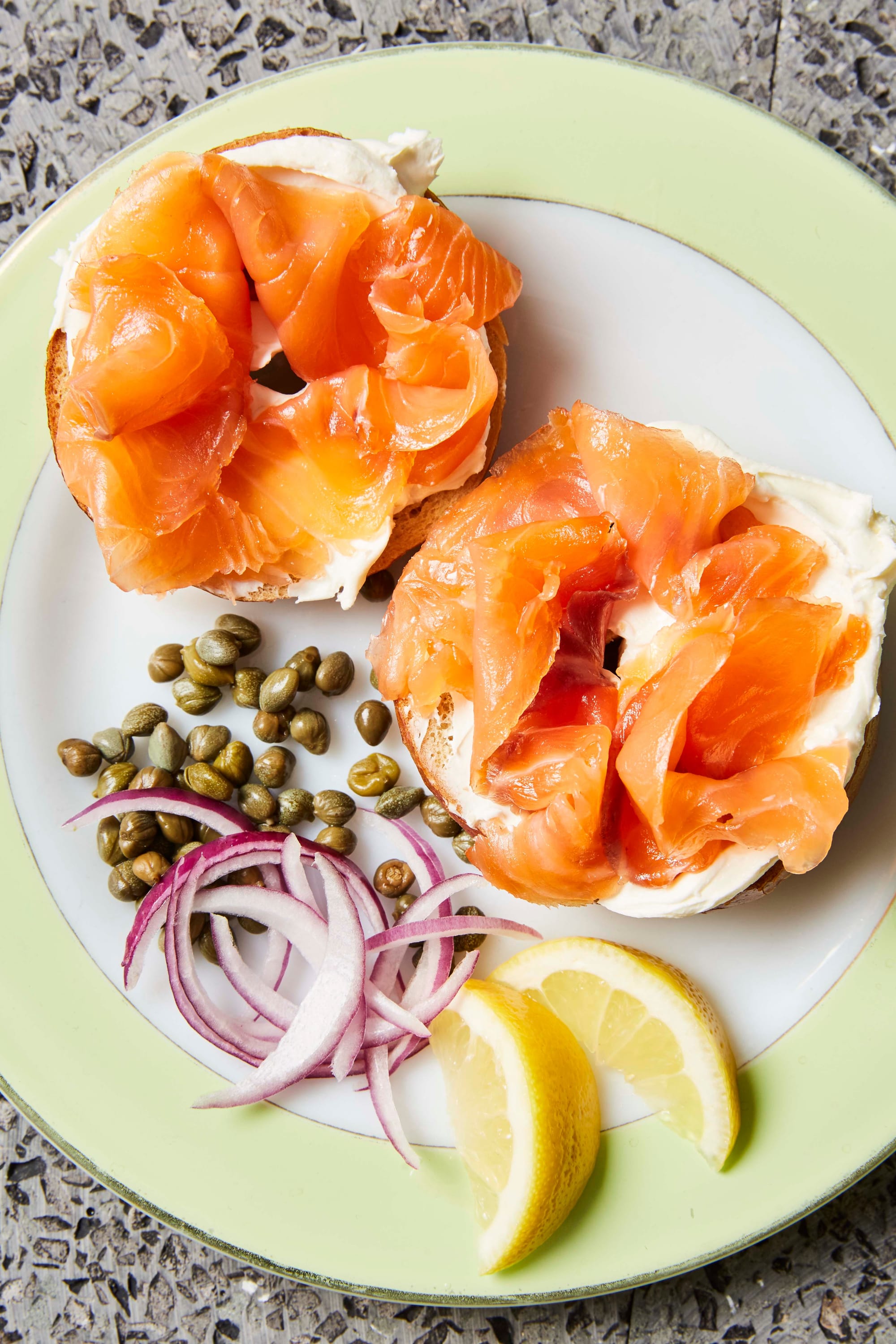Q&A With Cathy Barrow

Yesterday was the release date for Cathy Barrow’s new cookbook, Bagels, Schmears, And A Nice Piece Of Fish. I got an advance copy and I love it. Not only does it contain a baker’s dozen of wonderful-looking bagel recipes, it also includes just about every bagel-topping and bagel-adjacent recipe you’d ever need: half- and full-sour pickles, smoked whitefish salad, borscht, even recipes for bagel sandwiches. (I loved the idea of the “Pan Bagelnat,” a riff on the Southern French pan bagnat, a sort of salade niçoise in sandwich form.)
Cathy agreed to share a few of her recipes with us here, and to answer a few of my questions. For space reasons, I’ll be sending the four recipes from Cathy’s book—three homemade schmears (including one for Cannoli Cheese!) and one for home-cured lox—in a separate email, so keep an eye out for that one soon.

Andrew: I appreciate that you insist that great bagels take time to make, and that you give guidance for how to make the long fermentation fit into everyone’s busy schedule without stress. Can you say more about why time is one of the most important ingredients in a superior bagel?
Cathy: I like to think of bagel making as a two-step process: First we have forming/rising, next is boiling/baking. Bagels take some planning. The combination of high gluten flour and sweetener and then a long, strong luxurious knead makes the yeast explode with JOY. I use the refrigerator to slow that enthusiasm, giving the bagels time to develop flavor. I suppose you could let bagels rise for an hour or so and then boil and bake them, and they might even look like a bagel, but the flavor will be flat and the texture murky. Good things come to those who wait and for really good bagels, you have to wait 8 to 14 hours, with the sweet spot being around 11 hours; during this cold rise the dough builds a rich, deep flavor.
In order to make it easier for first time bagel bakers, I outline the ideal schedule if (1) you want to bake the bagels in the morning or (2) you want to bake them in the evening (see page 16).
You mention that it is barley malt that gives classic New York-style bagels their distinctive flavor. I call for barley malt syrup in my recipes too, but—aside from being a sticky challenge to work with, as you describe—it can be hard to find. You suggest non-diastatic malt powder as an alternative, something people can find at brewing supply stores. Does that work equally well?
Barley malt syrup is included in every good bagel recipe because it's what makes the bagel smell like a bagel. Many recipes include the syrup in the boiling water, also, for a double hit of sweetness. For reasons having to do with the pandemic and supply chains, this byproduct of pearling barley, barley malt syrup, ubiquitous as recently as 2019, is impossibly hard to find. Lately, I've had no trouble finding it online, but all of my regular barley malt haunts—health food stores, coops, Whole Foods—have had bare shelves for the last couple of years. Non-diastatic malt powder is a perfect substitute—one for one—so when my recipe calls for a tablespoon of the syrup, it works just as well with a tablespoon of the powder.
Important to note that there is also a DIASTATIC malt powder, more commonly available at beer supply stores, and it is decidedly NOT THE SAME1. King Arthur sells NDMP. If hunting for barley malt powder or syrup is a bridge too far, maple syrup and honey make delicious swap-ins, but be aware your bagels will not have the classic malty aroma.
As the title suggests, bagels are just the beginning in this book. Many of the bagel-topping and bagel-adjacent recipes get the Yiddish moniker “Balaboosta” applied to them (“Balaboosta Cream Cheese”, “Balaboosta Mayonnaise”, etc.). What does balaboosta refer to?
The classic definition of a balaboosta is an impressively competent homemaker. A balaboosta cooks, gardens, does needlework, gives back to her community, raises perfect children. I think it's a fantastic Yiddish word. In the book it refers directly to my greatgrandmother, Agatha, a tough, demanding woman who ran her household magnificently. She taught me how to cook, bake, preserve, garden, knit, sew, crochet, and clean house, all before I was 7 years old. My book includes stories about her and all my family because these recipes are inspired from eating around their tables. In the book, I use the term Balaboosta to indicate recipes that might otherwise be called DIY.
This Bostonian needs to know: What was the Brookline bakery that launched your love of bagels, and are they still around?
I've tried to figure out what the bakery was called as all of the family members from that generation are now gone, sadly. As far as I can tell, there isn't a current bagelry or appetizing shop in Brookline that was in business in what would have been 1960. Maybe your newsletter readers will help me figure it out?
Any Boston people know what Brookline bagelry would have been around in 1960? Kupel’s, Brookline’s most iconic bagel shop, opened in 1978, but maybe it was Bagel King, the shop Kupel’s replaced?
—Andrew
Wordloaf readers, of course, have already had the differences between non-diastatic and diastatic malt drilled into them. ↩





Member discussion